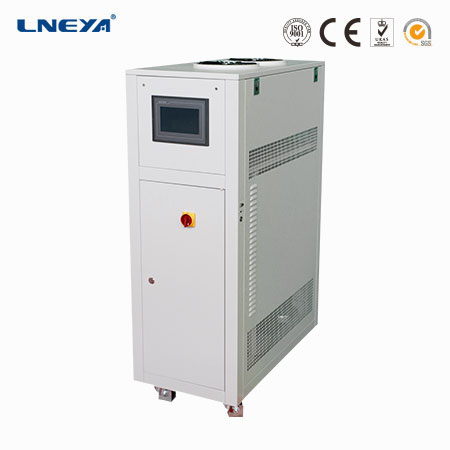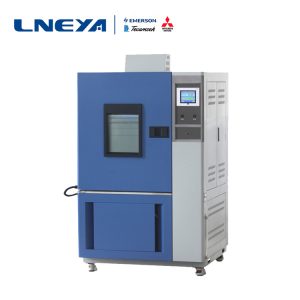
Thermal Oil System for Reactors in chemical/industrial laboratory
A thermal oil system for a reactor is a heat transfer system designed to provide precise and controlled heating or cooling to a chemical or industrial reactor.
This system uses a heat transfer fluid, typically a high-temperature mineral oil or synthetic fluid specifically formulated for this purpose, which can operate at elevated temperatures without breaking down or evaporating.Here’s an overview of the components and operation of a thermal oil system for a reactor:
1. Heat Transfer Fluid (Thermal Oil): The heart of the system is the heat transfer fluid, which has excellent thermal stability, low viscosity change over temperature, and high specific heat capacity. It is circulated through the reactor jacket or internal coils, efficiently transferring heat to or from the reactor contents.
2. Heating Source: The thermal oil is heated by an external source, such as a gas-fired burner, electric heaters, or a steam boiler. The heating source raises the temperature of the thermal oil to the desired level for the reactor process.
3. Thermal Oil Pump: A pump circulates the hot thermal oil through a closed-loop system, ensuring uniform heat distribution within the reactor. The pump is usually equipped with temperature and pressure monitoring devices to maintain safe operating conditions.
4. Heat Exchanger: In some cases, the thermal oil system may include a heat exchanger to indirectly heat or cool the reactor. The heat exchanger allows the thermal oil to transfer its heat to another medium, such as water or glycol, which then flows through the reactor jacket or coils. This indirect heating method provides an additional safety barrier and is often used when dealing with highly reactive or hazardous materials.
5. Expansion Tank: An expansion tank is incorporated into the system to accommodate the volume changes of the thermal oil as it heats up and cools down. It also serves as a reservoir for makeup fluid and helps maintain a constant system pressure.
6. Control System: A sophisticated control system monitors and regulates the temperature of the thermal oil, adjusting the heating source output or heat exchange rate as needed. It ensures that the reactor maintains a stable and accurate temperature profile throughout the process, which is crucial for consistent product quality and process efficiency.
7. Safety Features: The thermal oil system includes various safety features, such as temperature and pressure sensors, alarms, automatic shutdown systems, and fire protection measures, to prevent overheating, leaks, and other potential hazards.In summary, a thermal oil system for a reactor is a critical component in maintaining precise temperature control during chemical reactions or processes.
It offers efficient heat transfer, versatility in temperature control, and enhanced safety compared to direct heating methods, making it a popular choice in various industries, including pharmaceuticals, petrochemicals, and fine chemicals.
Thermal Oil System
- More
HR -25℃~200℃
The cooler is a very important part of the screw air compressor. The main function is to cool the lubricating oil of air compressor and the compressed air. If it’s blocked, then the temperature will go up. A…
- More
HRT -45℃~250℃
The cooler is a very important part of the screw air compressor. The main function is to cool the lubricating oil of air compressor and the compressed air. If it’s blocked, then the temperature will go up. A main cause of t…
loading…
已经是到最后一篇内容了!
Related recommendations
-
What should do if the equipment of the thermal shock test chamber does not reach the set temperature
1967The choice of the manufacturer of the thermal shock test chamber is related to the quality of the thermal shock test chamber. Once the quality is set, the temperature setting of the equipment will not be closed. What should I do if I encounter the...
View details -
What should you pay attention to when installing a DC charging pile cooling system?
1296Before installing a DC charging pile cooling system, you need to understand the characteristics of the equipment. This includes things like the device's size, weight, operating temperature range, and power requirements. Ensure that the equi...
View details -
What is the thermal chuck temp control system used for semiconductor testing?
1803The integration of temperature control systems and heat cartridges is mainly used in the testing process of the semiconductor industry, serving the following key purposes: Wafer Acceptance Test (WAT): After the completion of semicond...
View details -
Buy TCU-Multiple Reactor Cooling Heating Temperature Control System
1948Researchers who do research work know that during the laboratory experiments, TCU-multiple reactors are often used for cooling and heating temperature control systems or high and low temperature all-in-one machines, so TCU-multiple reactions that ...
View details
 LNEYA Industrial Chillers Manufacturer Supplier
LNEYA Industrial Chillers Manufacturer Supplier














